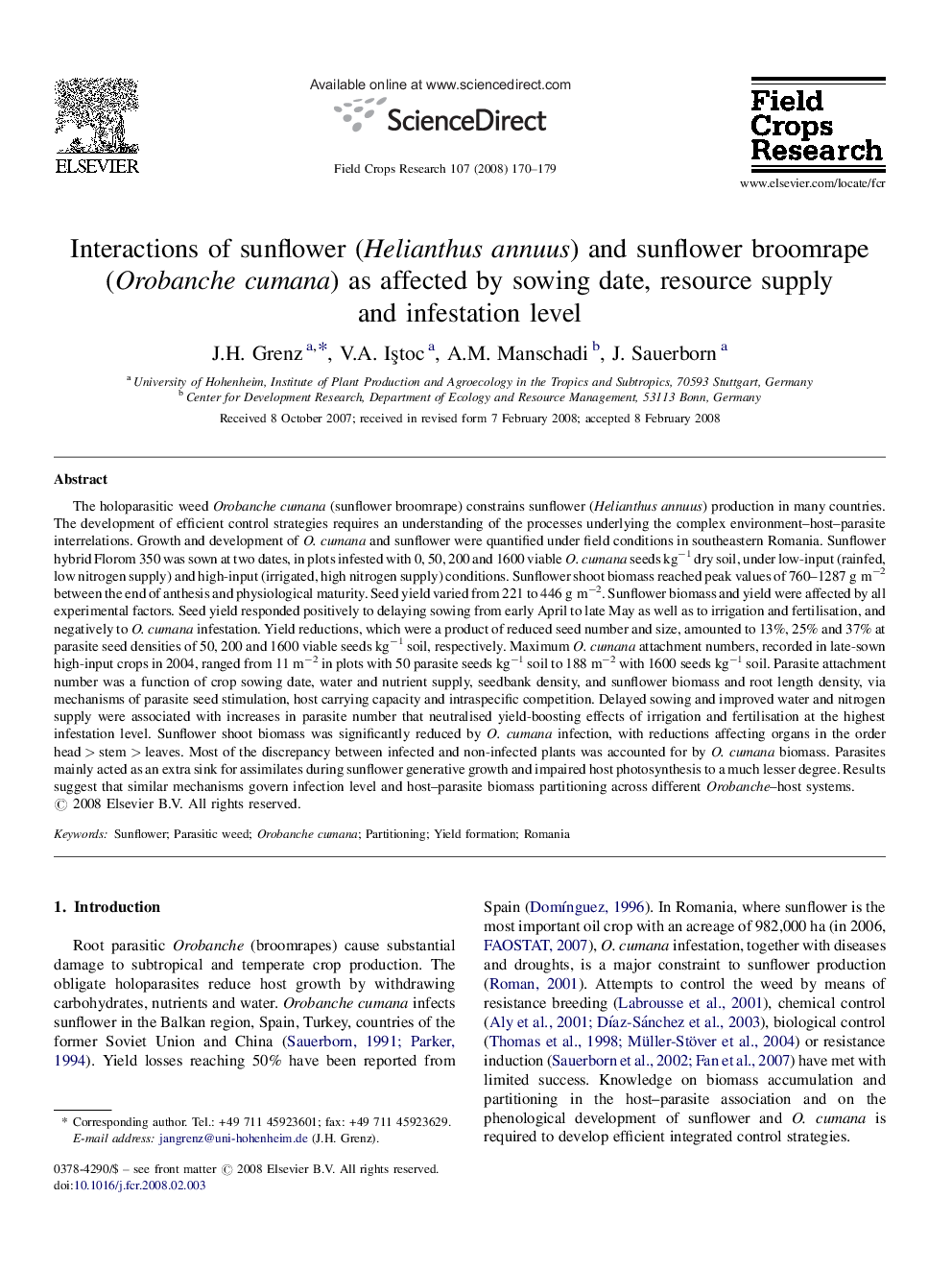| Article ID | Journal | Published Year | Pages | File Type |
|---|---|---|---|---|
| 4511412 | Field Crops Research | 2008 | 10 Pages |
The holoparasitic weed Orobanche cumana (sunflower broomrape) constrains sunflower (Helianthus annuus) production in many countries. The development of efficient control strategies requires an understanding of the processes underlying the complex environment–host–parasite interrelations. Growth and development of O. cumana and sunflower were quantified under field conditions in southeastern Romania. Sunflower hybrid Florom 350 was sown at two dates, in plots infested with 0, 50, 200 and 1600 viable O. cumana seeds kg−1 dry soil, under low-input (rainfed, low nitrogen supply) and high-input (irrigated, high nitrogen supply) conditions. Sunflower shoot biomass reached peak values of 760–1287 g m−2 between the end of anthesis and physiological maturity. Seed yield varied from 221 to 446 g m−2. Sunflower biomass and yield were affected by all experimental factors. Seed yield responded positively to delaying sowing from early April to late May as well as to irrigation and fertilisation, and negatively to O. cumana infestation. Yield reductions, which were a product of reduced seed number and size, amounted to 13%, 25% and 37% at parasite seed densities of 50, 200 and 1600 viable seeds kg−1 soil, respectively. Maximum O. cumana attachment numbers, recorded in late-sown high-input crops in 2004, ranged from 11 m−2 in plots with 50 parasite seeds kg−1 soil to 188 m−2 with 1600 seeds kg−1 soil. Parasite attachment number was a function of crop sowing date, water and nutrient supply, seedbank density, and sunflower biomass and root length density, via mechanisms of parasite seed stimulation, host carrying capacity and intraspecific competition. Delayed sowing and improved water and nitrogen supply were associated with increases in parasite number that neutralised yield-boosting effects of irrigation and fertilisation at the highest infestation level. Sunflower shoot biomass was significantly reduced by O. cumana infection, with reductions affecting organs in the order head > stem > leaves. Most of the discrepancy between infected and non-infected plants was accounted for by O. cumana biomass. Parasites mainly acted as an extra sink for assimilates during sunflower generative growth and impaired host photosynthesis to a much lesser degree. Results suggest that similar mechanisms govern infection level and host–parasite biomass partitioning across different Orobanche–host systems.
